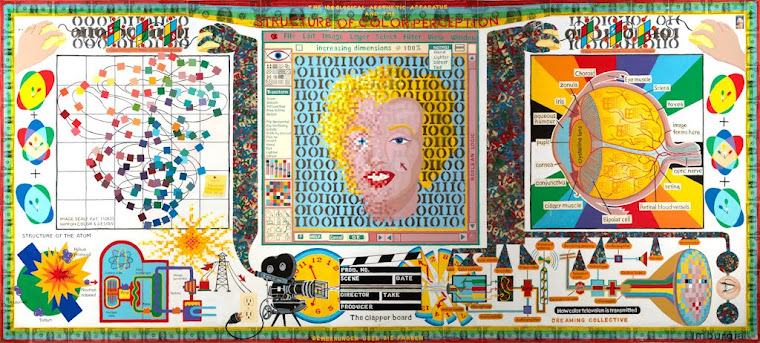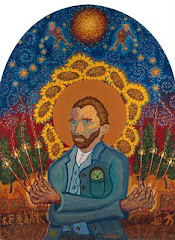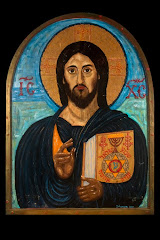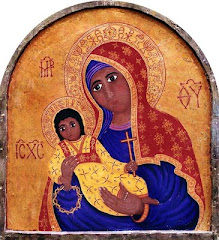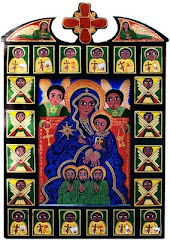 |
| "after crucifixion" (with obligations to prof. Craig Keen) |
*** Klediments:
*** It seems that my blogging often functions as an archive for my facebook ramblings, I reckon that’s ok.
*** “I would like to write like a painter. I would like to write like painting.” That is the first sentence in Helene Cixous’s “The Last Painting or the Portrait of God.” I was re-reading my thoughts about Cixous’ words that I wrote almost 20 years ago and so I tried to create a painting in response to her instead of using more words and this mess of an image is what happened. I painted this crucifixion outside late last night but alas it got rained on for about 15 mins before I got it under cover. All the color bled out and into itself and so it has become a ruin. This is the third recent painting I have had ruined in this way by rain since I can’t paint large 6X6 foot or larger canvases inside my little studio. I will probably scrape it off tomorrow and maybe try again although I am somewhat discouraged and tempted to just stop all together.
Cixous’s essay seems to lament the power of painters (images) over poets (language) but of course when is it ever that straightforward? She writes: “All I can do is tell the desire. But the painter can break your heart with the epiphany of a sea.... I am an awkward sorceress of the invisible: my sorcery is powerless to evoke without the help of your sorcery. Everything I invoke depends on your trust, on your faith. And the painter? Paints from hope to hope. And between the two? Is there despair? Nonhope. Between hope..... But straightaway hope arises.”
Hope? Nonhope? Despair? Like I said above it’s usually never that straightforward. And sure I would really like to be a poet rather than a painter and I do work at it, but I just don’t have the crucial skills needed with words to write great poetry; too much of my language bleeds itself out. In any event, I have been painting God’s portrait most of my life and I am no closer to ‘capturing‘ it now than when I started (oh how I loathe the metaphor of ‘capture‘ in the context of images). How very vain and foolish I have been. And so with just a little rain all my work and life is bled out and washed away. Cixous says it like this:
“All I will have done will have been to attempt a portrait of God. Of the God. Of what escapes us and makes us wonder. Of what we do not know but feel. Of what makes us live. I mean our own divinity, awkward, twisted, throbbing, our own mystery--we who are lords of this earth and do not know it, we who are touches of vermillion and yellow cadmium in the haystack and do not see it, we who are the eyes of this world and so often do not even look at it, we who could be the painters, the poets, the artists of life if only we wanted to be, we who could be the lovers of the universe. We who are bits of sun, drops of ocean, atoms of the god and who so often forget this. We who forget we could also be luminous as light....but what we forget, the painter who sees God each day in the process of changing, does not forget.”
Remembering can bring such suffering, but I would like to be a painter against forgetting. Pray for that.
*** a poem by Frank O’Hara:
Why I Am Not A Painter
I am not a painter, I am a poet.
Why? I think I would rather be
a painter, but I am not. Well,
for instance, Mike Goldberg
is starting a painting. I drop in.
"Sit down and have a drink" he
says. I drink; we drink. I look
up. "You have SARDINES in it."
"Yes, it needed something there."
"Oh." I go and the days go by
and I drop in again. The painting
is going on, and I go, and the days
go by. I drop in. The painting is
finished. "Where's SARDINES?"
All that's left is just
letters, "It was too much," Mike says.
But me? One day I am thinking of
a color: orange. I write a line
about orange. Pretty soon it is a
whole page of words, not lines.
Then another page. There should be
so much more, not of orange, of
words, of how terrible orange is
and life. Days go by. It is even in
prose, I am a real poet. My poem
is finished and I haven't mentioned
orange yet. It's twelve poems, I call
it ORANGES. And one day in a gallery
I see Mike's painting, called SARDINES.
Why? I think I would rather be
a painter, but I am not. Well,
for instance, Mike Goldberg
is starting a painting. I drop in.
"Sit down and have a drink" he
says. I drink; we drink. I look
up. "You have SARDINES in it."
"Yes, it needed something there."
"Oh." I go and the days go by
and I drop in again. The painting
is going on, and I go, and the days
go by. I drop in. The painting is
finished. "Where's SARDINES?"
All that's left is just
letters, "It was too much," Mike says.
But me? One day I am thinking of
a color: orange. I write a line
about orange. Pretty soon it is a
whole page of words, not lines.
Then another page. There should be
so much more, not of orange, of
words, of how terrible orange is
and life. Days go by. It is even in
prose, I am a real poet. My poem
is finished and I haven't mentioned
orange yet. It's twelve poems, I call
it ORANGES. And one day in a gallery
I see Mike's painting, called SARDINES.
Obliged




